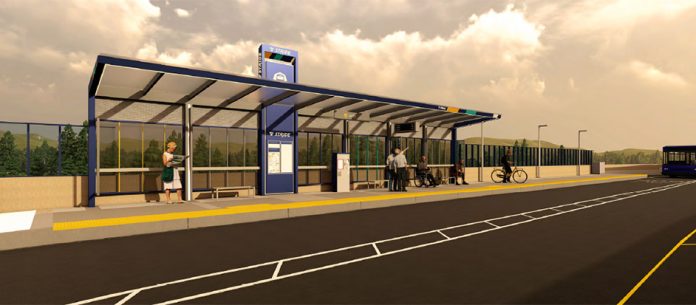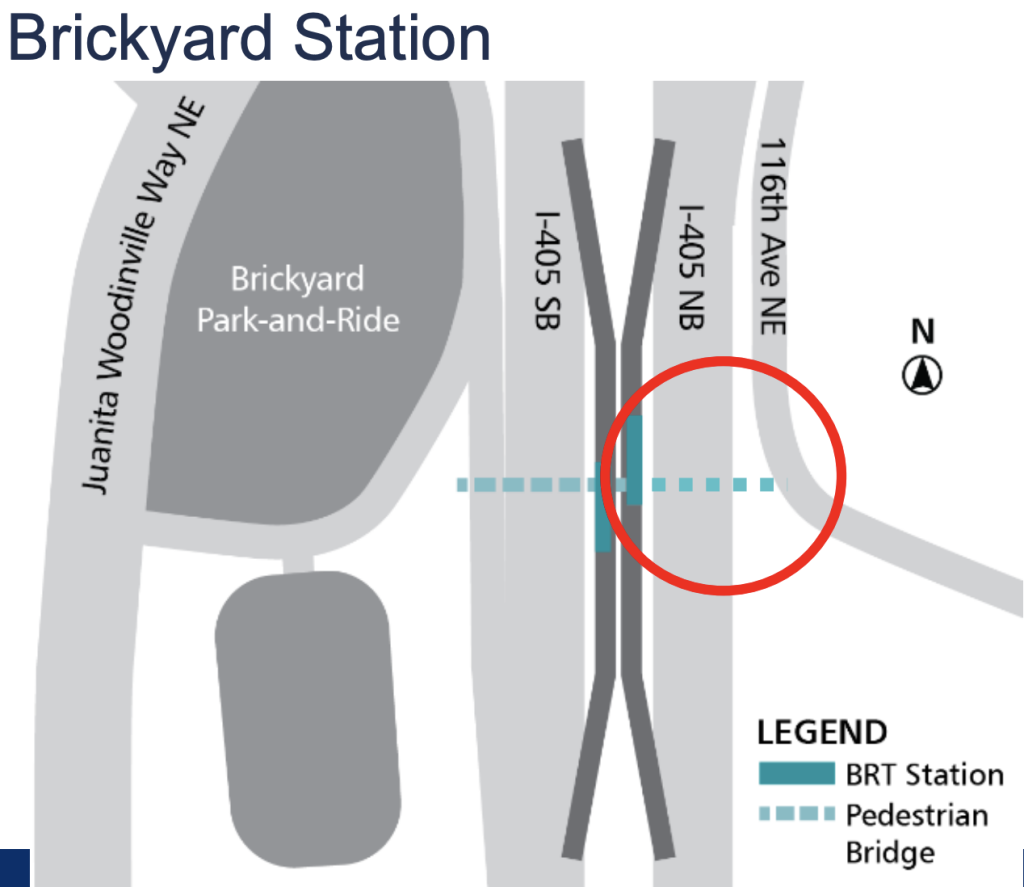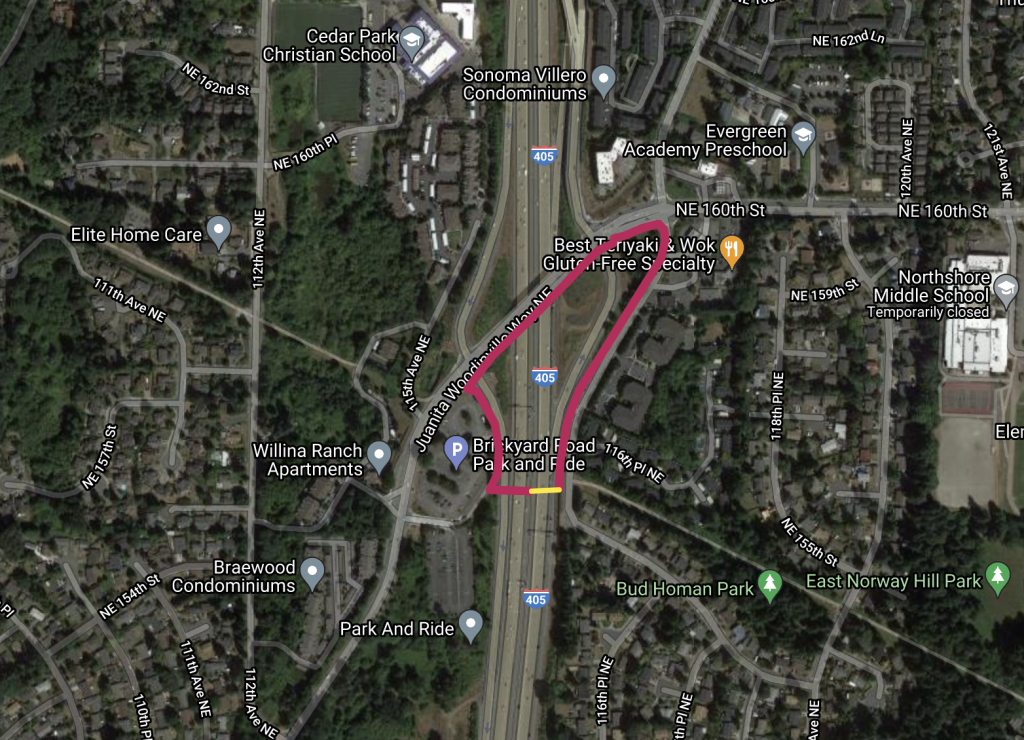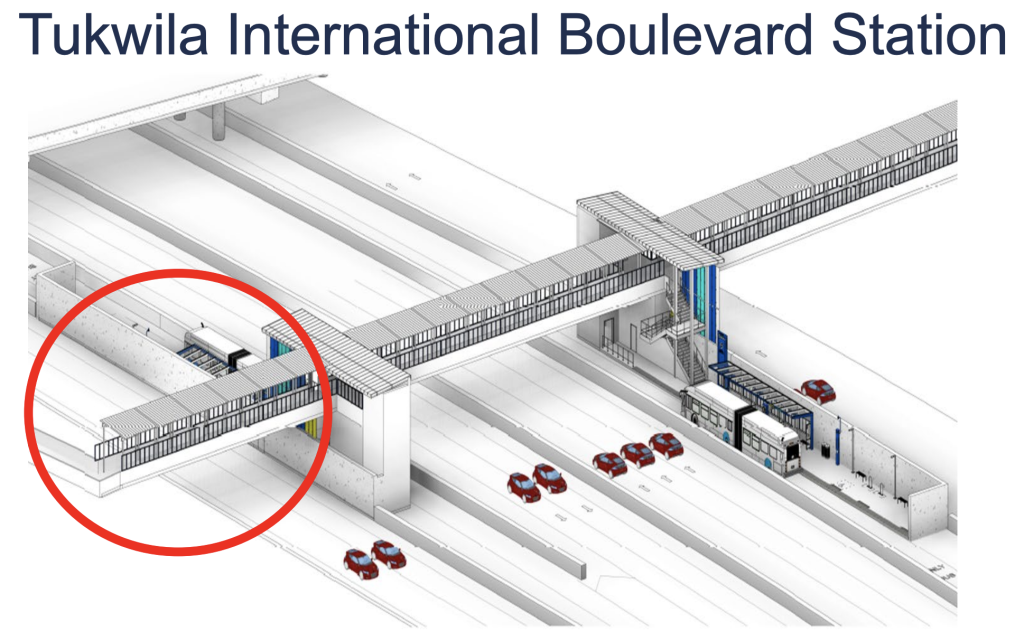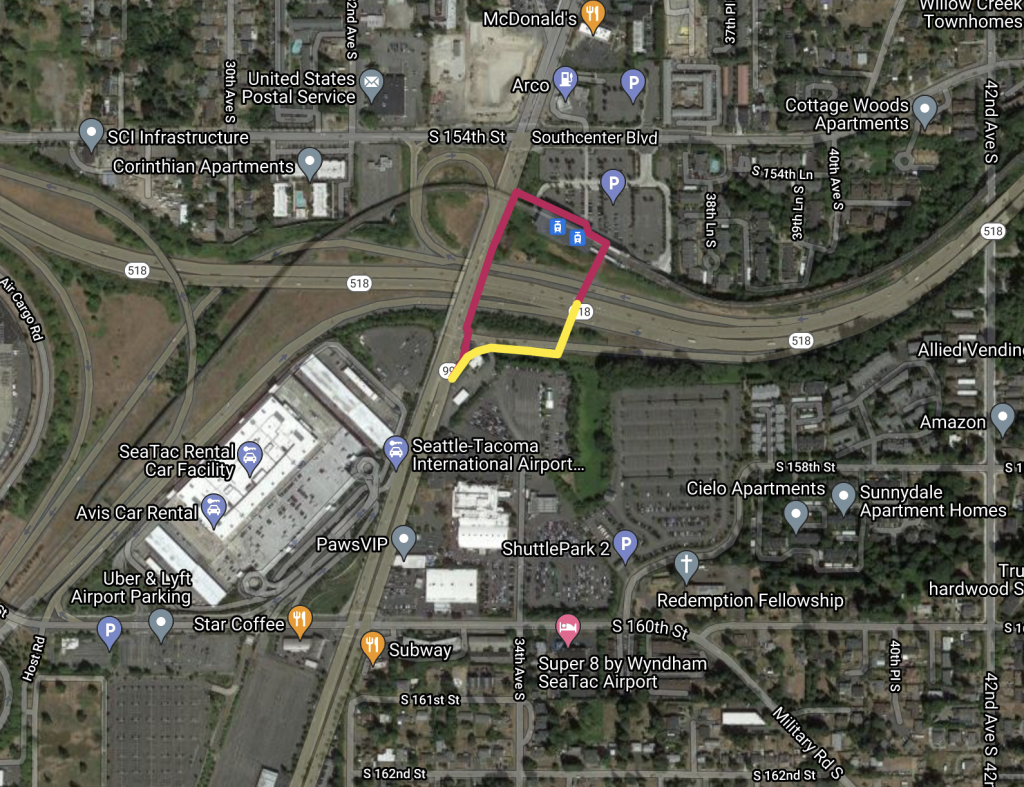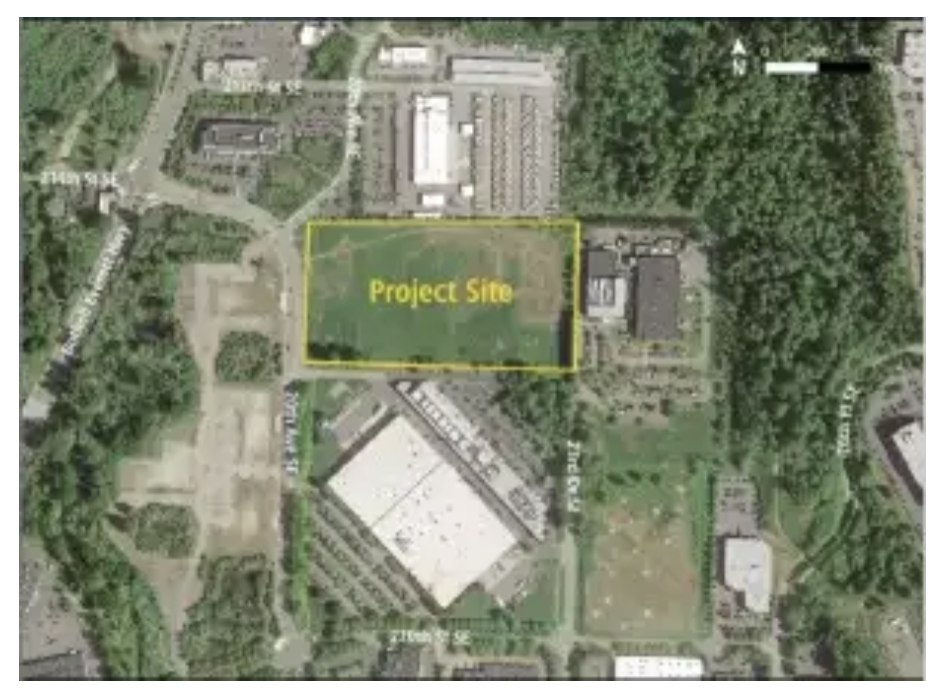Sound Transit boardmembers received an update on the Stride I-405 and SR-522/NE 145th St projects on Thursday — just one week after the board approved major realignment of the Sound Transit 3 (ST3) capital program. Among the highlights of the update were ways that the agency is trying to cut Stride project costs to deliver projects within affordable budgets. While most savings are expected to come from delayed parking projects and fewer transit lanes, the agency also suggested saving additional money by cutting back on stations at two locations: Tukwila International Boulevard Station and Brickyard Station. The ramifications of those changes are worse walksheds and pedestrian access than had been planned for both sites. Yet, perhaps more than that, the station cutbacks reinforce a troubling trend for an agency that lacks a good track record on rider experience and access for those who don’t drive.
Stride station access downgrades proposed
Agency staff discussed two cost savings measures on Thursday that would create decidedly worse Stride station access outcomes for people walking, rolling, and biking. The savings themselves are fairly paltry, ranging from $15 million to $20 million amid a nearly $2 billion Stride program, but the gist of them is that they will result in shaved off pedestrian bridges over loud, polluted freeways.
The biggest station access savings would come from building half a pedestrian bridge over I-405 at Brickyard Station, which would allow riders to only reach the Brickyard Park-and-Ride from the freeway median station. Agency estimates suggest that 1,500 riders are expected to use the station on any given day by 2042, but cutting off the eastern side of the pedestrian bridge would discourage riders from the east side, which has some of the best potential for walk-on and bike-on riders. In fact, this connection has the opportunity of better tying the two halves of the Tolt Pipeline Trail together.
Eliminating the eastern half of the bridge would mean that people walking, rolling, and biking would have to travel 2,800 feet instead of 100 feet just to reach the same point on the east side of I-405; to put it in context, that’s nine minutes of walking time instead of a mere 30 seconds. Sound Transit is considering forgoing the eastern portion of the bridge based on estimates that suggest the savings could be in the range of $10 million to $15 million.
Smaller savings could come from the planned Stride station at Tukwila International Boulevard, which would connect to the existing Link light rail station. A pedestrian bridge had been proposed in three parts over SR-518 with one end connecting the light rail station and the other to the south side of the on-ramp that leads to Tukwila International Boulevard. In between, the bridge would provide access to two Stride platforms on either side of the freeway. However, it’s the southern segment of the bridge that is conceptually proposed to be axed, a decision that could have longstanding negative consequences for transit-oriented growth in the area.
The Tukwila International Boulevard Stride station is expected to serve some 3,000 daily riders by 2042 with most transferring to the Link 1 Line and RapidRide A and F Lines. As far as the nearby land use pattern goes, development south of the freeway is mostly parking lots and strip malls with street patterns that ensure very long walking distances to the nearest housing. These factors likely influenced Sound Transit’s thinking for the cutback, but skipping out on a pedestrian connection in this location all but guarantees a continuation of this land use pattern and will force area workers and residents to walk longer distances or even encourage them to drive. Forgoing the southern bridge connection would mean a five-minute walk instead of a two-minute walk to the south side of SR-518 and Tukwila International Boulevard in perpetuity.
All in all, the proposed Stride station changes seem quite short-sighted and a severe disregard to the rider experience. Yet, this type of “value engineering” has been a common theme for the Stride program where Sound Transit has cheaped out on delivering a cohesive, quality product and then overcommitted to expensive, overengineered nightmares like the I-405/NE 85th St interchange. Finding a way to keep the bridge connections seem worth the cost, which might be able to be paid for by further delaying the agency’s portfolio of unnecessary parking projects.
Other Stride cost savers and updates
Overall, the Stride program opening date has been delayed to 2027 due to paused actions and limited resources. The approved ST3 realignment plan pegged 2026 for the Stride I-405 South (S1 Line), SR-522/NE 145th St (S3 Line), and NE 85th St interchange projects while Stride I-405 North (S2 Line) is planned for 2027. Whether or not projects can adhere to the timelines through accelerated schedules remains to be seen, but agency staff are trying to speed things up. Critical decisions will need to be made by the board in the coming months as actions are brought forth; however, permitting, review, design, and construction will all be other important factors in the timing of the Stride projects.
Sound Transit has also said that there are limited remaining opportunities for Stride cost savings measures beyond what has been identified through project development. However, value engineering will continue through final design of remaining projects to contain costs and find efficiencies.
As far as the other cost saving measures go, Sound Transit has saved a boat load by pushing back parking projects into the 2030s and 2040s. Approximately $275 million to $325 million in near-term costs could be saved by deferring parking projects that are slated to eventually deliver some 2,200 parking spaces. Sound Transit has also been able to eke out savings through a mix of optimitized intersections, partnerships, and reduced use of business access and transit (BAT) lanes on the S3 Line. The agency estimates those savings to be over $100 million or 17% in project costs, but fewer BAT lanes are real risks to service quality through speed and reliability.
In terms of updates, perhaps one of the most important foundational aspects of the Stride program is the new Bus Base North, which is planned to be located in Bothell’s Canyon Park area. A 12.5-acre site has already been chosen that could accommodate up to 120 buses and provide all the accoutrements for maintenance and operations of the buses.
Because the estimated cost for Bus Base North has escalated from $208 million in 2019 to $290 million in 2021 (due to a consultant peer review), Sound Transit is considering cost saving measures that would build a bus base that only accommodates 80 buses. That would save about $30 million but mean that ST Express buses could not be stored at the facility.
The Sound Transit Expansion Committee did forward a recommendation to the full board on a project to be built for Bus Base North. That recommendation still provides for up to 120 buses for now, but could be whittled back as other future project actions are made by the board. Nevertheless, the recommendation stipulates that the initial plan is to provide space for 70 articulated hybrid diesel buses, ten articulated battery electric buses (to be operated on the S3 Line), and 40 double-decker buses. Sound Transit also plans to eventually convert the entire fleet to battery electric, so there will be infrastructure put in place to support the initial ten battery electric buses and accommodation for future expansion.
Looking ahead, the project development timeline for the Bus Base North runs through 2023 with final design starting this fall, acquisition of all property and environmental permits by the end of next year, project baseline approval also by the end of next year, and final land use approval by Bothell in late 2023. If all goes to plan, the project could be completed in 2025.
Stephen is a professional urban planner in Puget Sound with a passion for sustainable, livable, and diverse cities. He is especially interested in how policies, regulations, and programs can promote positive outcomes for communities. With stints in great cities like Bellingham and Cork, Stephen currently lives in Seattle. He primarily covers land use and transportation issues and has been with The Urbanist since 2014.


